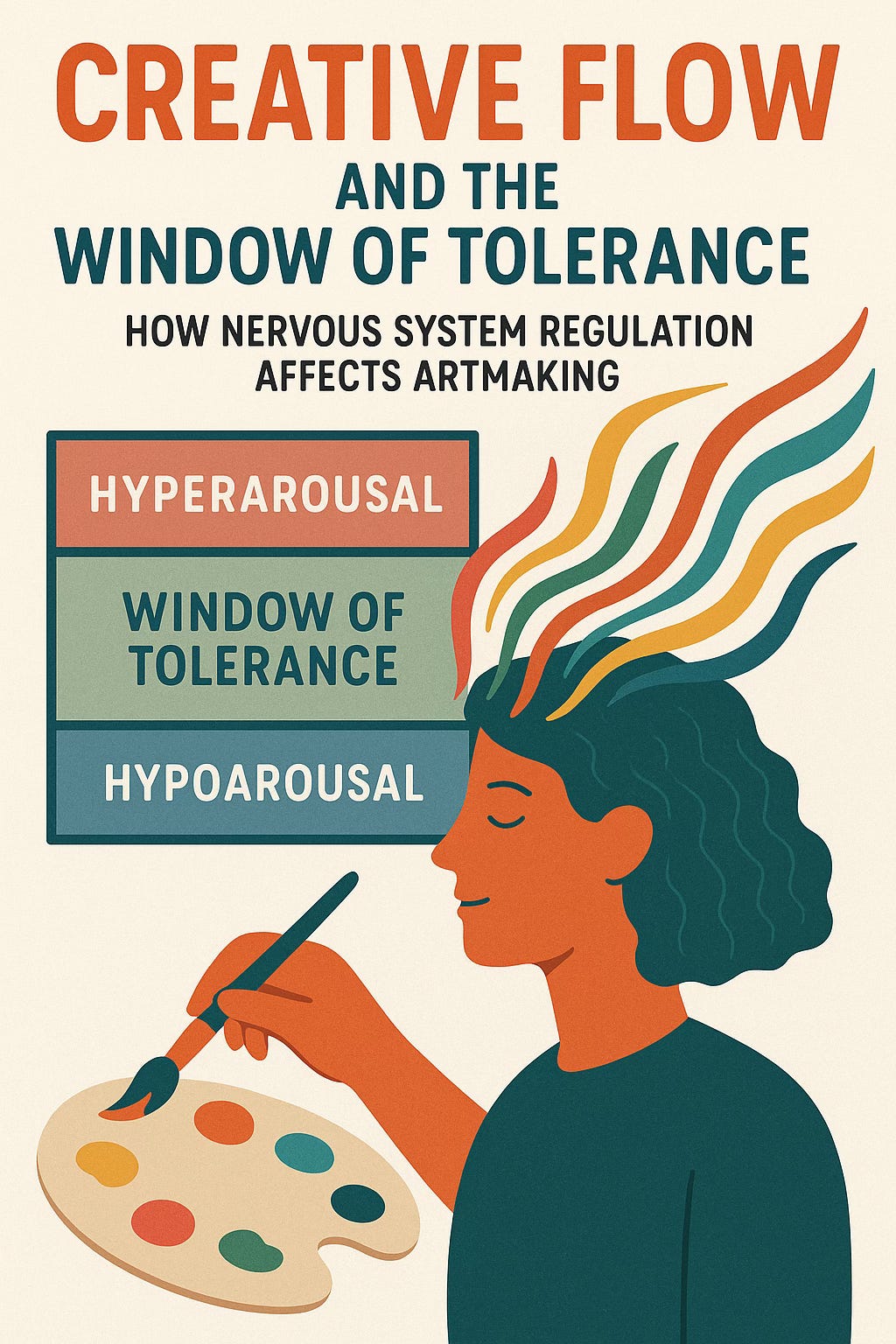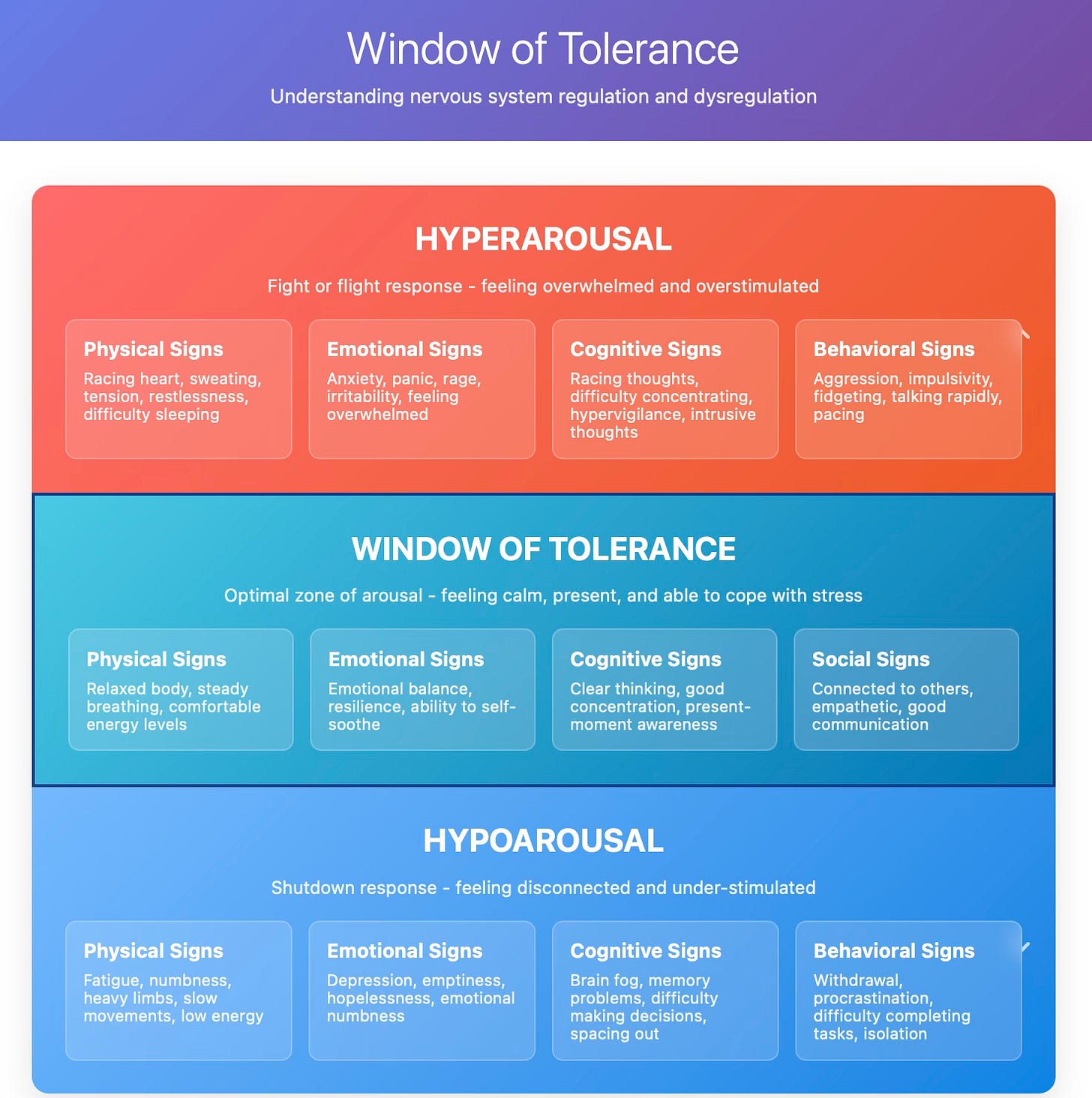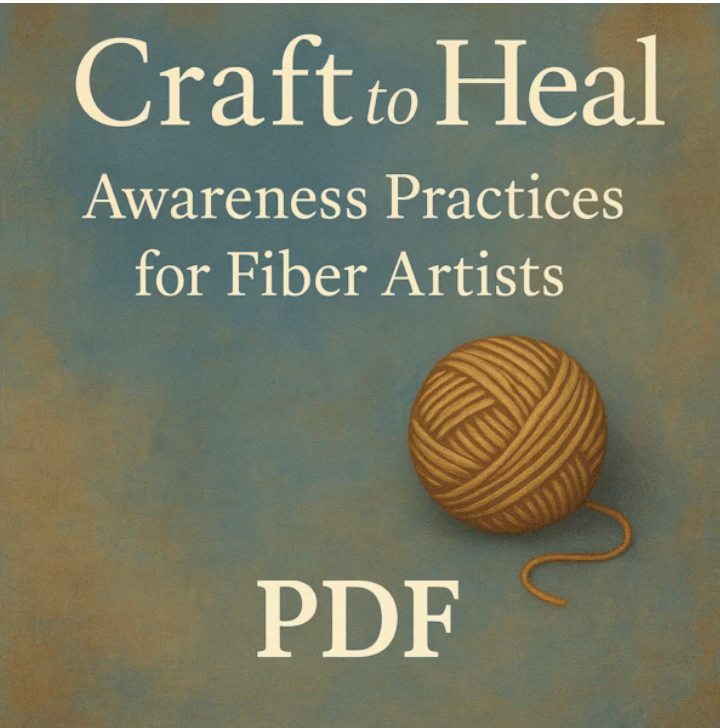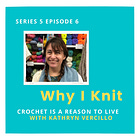Creative Flow and the Window of Tolerance: How Nervous System Regulation Affects Artmaking
Many people try to force creativity while in a dysregulated state, only to become frustrated or ashamed when the work does not come. The key is understanding how to work with your nervous system.
Creative work often asks us to enter a state of openness, presence, and emotional engagement. This state is what many describe as "flow," a form of energized focus where time fades and ideas unfold intuitively. But for many artists, writers, and makers, entering this state can feel elusive or even impossible. The challenge is not a lack of discipline or imagination. Often, it is actually an issue of nervous system regulation.
The ability to create with ease is closely tied to the body's sense of safety. When the nervous system is regulated, we are more likely to access states of curiosity, spontaneity, and play. When the nervous system is dysregulated, we may find ourselves in shutdown, agitation, or hypervigilance. Understanding how your body responds to stress can transform the way you approach your creative life.
I have developed these ideas after decades of lived experience, interview-based insights, and deep research into the complex relationship between art and health. They are based on my unique 6-part framework. If you are interested in assistance in applying these ideas to your own life: Order a Creative Health Assessment or Book a 1:1 Coaching Call.
The Window of Tolerance: A Framework for Capacity
The "window of tolerance" is one of the concepts from my years in Psychology graduate school that has stuck with me. I use it to explain things all of the time. It is a term coined by psychiatrist Dan Siegel to describe the optimal zone of nervous system arousal where we can think clearly, feel our emotions without becoming overwhelmed, and respond flexibly to challenges. When we are within this window, our brains and bodies are in a state of regulated engagement.
Outside this window, we may move into hyperarousal (fight-or-flight states characterized by anxiety, anger, or panic) or hypoarousal (freeze states marked by numbness, disconnection, or collapse). These shifts are not failures. They are protective responses meant to keep us safe. But they can interfere with the creative process.
Many people try to force creativity while in a dysregulated state, only to become frustrated or ashamed when the work does not come. The key is not more effort. The key is understanding how to work with your nervous system, not against it.
Flow and Neurobiology
Flow states have been extensively studied in psychology, famously in the work of Mihaly Csikszentmihalyi. His research suggests that flow occurs when we are fully immersed in a task that is both challenging and aligned with our skills. It is a sweet spot between boredom and overwhelm. But what his model does not always account for is how trauma, chronic stress, or burnout can reduce our baseline capacity to enter this space.
If your nervous system is often outside its window of tolerance due to past experiences, environmental stressors, or lack of rest, you may find it harder to access flow even when the external conditions are right. This is not a character flaw. It is a physiological reality.
In this way, creative flow is not just about focus. It is about safety. It is about the body feeling calm enough to allow imagination, experimentation, and emotional risk.
How Dysregulation Shows Up in Creative Practice
Signs of hyperarousal in the creative process may include racing thoughts, perfectionism, irritability, and compulsive overworking. You may jump between projects, feel the need to prove something, or obsess over every detail. In this state, creating may feel urgent and high-stakes.
Signs of hypoarousal may include difficulty starting, numbness, procrastination, and feeling emotionally flat. You might sit in front of your materials and feel nothing. You might describe yourself as lazy, but what you are experiencing is often a freeze response.
Both of these states are valid responses to stress. Neither means you are broken. But they do indicate that your nervous system may need care before your creativity can come online.
And I should add that neither one is better or worse than the other. I mention this because as someone prone to depression and hypoarousal, I can sometimes envy anxiety and hyperarousal because at least there is energy there but when I’ve been in those states I’ve known them to be equally as uncomfortable so the allure is an illusion.
Practices for Regulation and Return
Returning to the window of tolerance often requires simple, embodied practices. These are not techniques for boosting productivity. They are invitations to safety. Gentle movement, breathwork, grounding exercises, time in nature, or sensory regulation can all help shift your system back toward center.
Some people find that rhythmic practices, such as walking or knitting, help restore a felt sense of coherence. Others may need rest, connection, or solitude. The key is not to force yourself to create from a place of disconnection, but to build conditions that welcome creative presence.
Therapeutic support, especially from trauma-informed modalities like somatic experiencing or Internal Family Systems, can also help increase your capacity over time. These approaches do not just address mental blocks. They work with the body to expand your window of tolerance so that creative flow becomes more accessible.
Redefining Creative Readiness
The dominant culture tends to equate readiness with discipline or hustle. But from a trauma-informed perspective, readiness is about regulation. It is about knowing how to support your system so that it can open to the work you want to do.
Creative readiness does not mean feeling calm and inspired all the time. It means being in enough connection with yourself that you can tolerate the discomfort and uncertainty that artmaking often brings. It means learning to notice when you are out of your window and choosing to pause, adjust, or tend to yourself rather than push through.
Creating from a regulated state does not guarantee perfection. But it does allow for access, agency, and joy. When the nervous system feels safe, the imagination can roam. And when you understand your own rhythms, you no longer have to fight your way into flow. You can meet yourself where you are, and build from there.
I have developed these ideas after decades of lived experience, interview-based insights, and deep research into the complex relationship between art and health. They are based on my unique 6-part framework.
If you are interested in assistance in applying these ideas to your own life:
Do you enjoy any of the fiber arts?
If so then you might be interested in my download about using fiber arts with awareness practices including grounding and centering that are beneficial for returning to a window of tolerance.








“The key is not to force yourself to create from a place of disconnection, but to build conditions that welcome creative presence. ”
Thank you for this 🩵 I couldn’t write or finish anything for the longest time, I think because of hypoarousal—and because I felt I had to use writing to make up for all the ways I felt broken. (Not the best conditions for creativity)
I can also relate to what you said about sometimes envying the hyperfocus, even knowing that it’s just as uncomfortable. I think part of it is toxic productivity, this idea that hyperfocus is better because at least I would get more done.
Wow. I spend a LOT (I mean a LOT) of time in hyoerarousal. I am often asking myself "if this is what you love why are you so angry?" I'm betting this has much to do with my scarcity mindset around time...as always, thank you for helping me find new insights to myself.